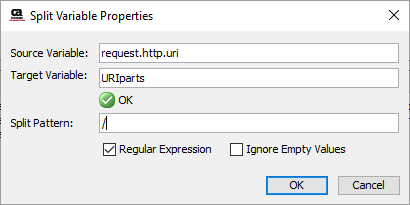
Certain variables are built into the API Gateway. One such variable is ${request.http.uri}. This variable will return the URI of the request. To demonstrate how this variable is commonly used, I setup http://www.freekb.net/Stage1 to return "Welcome to Stage 1".

- In the Policy Manager, select Publish Web API to create a REST service
- Give your service a unique name, such as myService.
- Target URL = The URL that requests will route out to (outbound), which would be http://www.freekb.net/${request.http.uri} in this example
- Gateway URL = The context root of the URL that requests will route into (inbound), which will be /Stage1 in this example
- Select Finish.

You can now get http://www.freekb.net/${request.http.uri} through the API Gateway. Let's say your API Gateway is configured with https://api.example.com. Since you defined /Stage1 as the endpoint for myService, you would use https://api.example.com/Stage1 to route requests through the API Gateway and onto http://www.freekb.net/${request.http.uri}. To put this another way, in this example, https://api.example.com/Stage1 is the inbound URL and http://www.freekb.net/${request.http.uri} is the outbound URL.
- Inbound URL = https://api.example.com/Stage1
- Outbound URL = http://www.freekb.net/${request.http.uri}
You should get the following.

As a bit of a more practial scenario, let's say you have multiple outbound URLs, such as.
- http://www.freekb.net/foo
- http://www.freekb.net/bar
In this scenario, you could add a wildcard to the inbound URL.
- Inbound URL = https://api.example.com/Stage1/*
And then use the Split Variable assertion to split the ${request.http.uri} variable. In this example, the ${request.http.uri} variable is split at each forward slash.

If https://api.example.com/Stage1/foo is used as the inbound URL, then the following will be defined.
- ${URIparts[0]} = /
- ${URIparts[1]} = Stage1
- ${URIparts[2]} = foo
Or if https://api.example.com/Stage1/bar is used as the inbound URL, then the following will be defined.
- ${URIparts[0]} = /
- ${URIparts[1]} = Stage1
- ${URIparts[2]} = bar
The Route via HTTP assertion would then use the ${URIparts[2]} variable to know if the request should be forwarded onto http://www.freekb.net/foo or http://www.freekb.net/bar.

Did you find this article helpful?
If so, consider buying me a coffee over at 